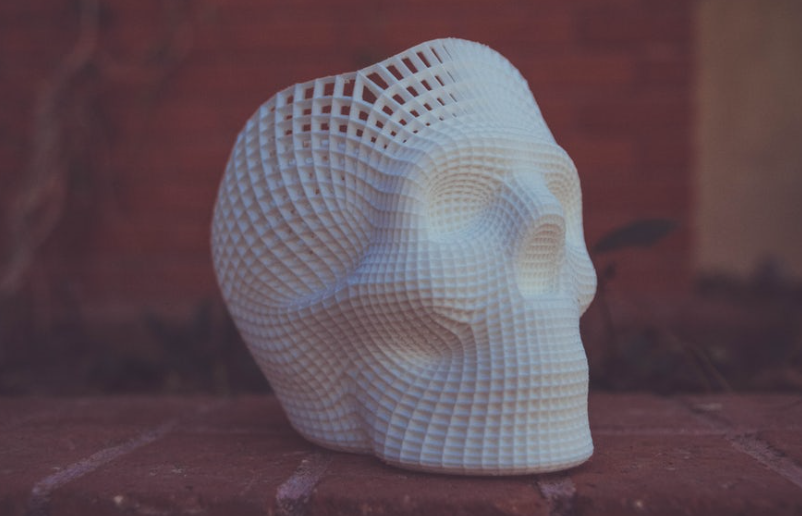By Nkem Iregbulem
As 3D printers become increasingly common, the technology behind it is becoming more and more advanced. Still, many remain unaware of its full potential. Believe it or not, with current technology, 3D printers have already successfully printed medical models, eyeglasses, musical instruments, houses, prosthetic limbs, and even human body parts in a matter of hours.
3D printing describes the process by which three dimensional objects are created from a digital file. It is considered an additive process because it manufactures objects by laying down successive layers of a material. This process differs significantly from all other current, traditional manufacturing processes, which tend to depend on human labor. With time, 3D printing technology will inevitably change the way most industries operate. Since the efficiency of human labor can sometimes vary, 3D printing would be especially useful in industries that rely on mass production because the printer could operate around the clock to produce multiple copies of a product. Car manufacturers could print car parts, and construction companies could print building materials — or perhaps the buildings themselves.
3D printing would also benefit industries with companies that are constantly developing and tweaking new products. The technology would effectively reduce the amount of time it takes for suggested changes of a product to be implemented. This new ease might encourage companies to release higher quality products. 3D printing could even improve the healthcare industry. Hospitals could use these printers to construct human tissue or simply print more supplies. With the help of this technology, hospitals could save more lives.
The huge potential for 3D printing technology may compel you to invest in 3D printing stocks. Your choices include 3D Systems (DDD), Autodesk, Inc. (ADSK), Organovo Holdings, Inc. (ONVO), Stratasys, Inc. (SSYS), Voxeljet A.G. (VJET), Materialise (MTLS), ExOne Company (XONE), and Proto Labs (PRLB). The DDD, PRLB, and VJET stocks are traded on the New York Stock Exchange. Meanwhile, the ADSK, ONVO, XONE, and MTLS stocks are all traded on the NASDAQ exchange.
You first option is 3D Systems, a company that offers 3D printing solutions, including 3D printers, print materials, software, on-demand manufacturing services, and 3D digital design tools. The company was founded in 1986 and is headquartered in South Carolina. Its customers come from a host of industries, ranging from healthcare to education to aerospace. Its products can be found on a factory floor, in an operation room, or at a product design shop. The company’s precision healthcare products pave the way for simulation, Virtual Surgical Planning, and even the printing of medical devices, dental devices, and personalized surgical instruments. The company has market cap of $1.62 billion but does not pay a dividend yield. With a price-to-sales ratio of 2.55, the stock is considered slightly overpriced. It trades at 100.0 times forward earnings and has a price-to-book ratio of 2.78. Though the company has a negative 3-year revenue growth rate of -0.39%, it has seen increasing revenue values from 2016 to 2017.
Autodesk, Inc. is another company in the 3D printing industry. The multinational software company, founded in 1982, offers its computer-aided design services and software to users in over 160 countries in a wide range of industries including entertainment, construction, architecture, media, engineering, and manufacturing. The company boasts a large market cap of $30.19 billion and does not pay a dividend yield. Its stock has a very high forward P/E ratio of 158.73. It has a price-to-sales ratio of 14.50, making the stock clearly overpriced. It also has an extremely high price-to-book ratio of 269.76. It has a negative 3-year revenue growth rate of -6.45% and 5-year revenue growth rate of -2.32%. It saw its highest revenue values in 2015 when it brought in around $2.51 billion.
Founded in 2007 and headquartered in California, Organovo Holdings, Inc is another interesting 3D printing company worth looking at. The company designs and creates functional, three dimensional, and structurally accurate human tissues with its powerful bioprinting technology. It uses these creations, made from living cells and biocompatible hydrogels, for drug development, research, and the treatment of damaged human tissues and organs. Ultimately, as it advances its technology, the company hopes to be able to produce whole human organs for use in future transplants. The company has a small market cap of $160.02 million, so its stock is very speculative. The stock has a high price-to-sales of 35.88, which has been decreasing over the past few years. It also has a price-to-book ratio of 3.84 and does not pay a dividend yield. The company enjoys an impressive 3-year revenue growth rate of 100.51% as its revenue has been increasing each fiscal year since 2014.
You may also want to consider Stratasys, Inc., a key player in 3D printing and additive manufacturing solutions. The company is based in Minnesota and was founded in 1989. Its product portfolio includes desktop 3D printers, rapid prototyping systems, and direct digital manufacturing production systems. These products are offered and used in industries ranging from education to aerospace. It also operates Thingiverse, a online platform where users share downloadable, digital 3D designs for future 3D printing projects. The company has a market cap of $1.02 billion but does not pay a dividend yield. Its stock has normal range price-to-sales ratio of 1.65. It trades at 68.49 times forward earnings and has a low price-to-book ratio of 0.96.
Founded in 1999 and headquartered in Germany, Voxeljet A.G. is another company involved in the 3D printing industry. It has two main operating segments: the Systems segment and the Services segment. The Systems segment develops and distributes industrial 3D printing systems, while the Services segment provides on-demand parts and services to its customers. These industrial customers primarily come from entertainment, automotive, aerospace, construction, and engineering industries. The company has a small market cap of $68.45 million, so its stock is very speculative. It does not pay a dividend yield, and its stock is slightly overpriced with a price-to-sales ratio of 2.44. The stock also has a price-to-book ratio of 1.37. The company’s revenue grew each fiscal year from 2010 to 2015, but it took a small dip after 2015 before increasing again after 2016. The company boasts a 3-year revenue growth rate of 12.77% and an even higher 5-year revenue growth rate of 21.62%.
Materialise, founded in 1990, offers 3D printing services and additive manufacturing software. Although the company is based in Belgium, it also conducts its business internationally in countries such as Germany, Brazil, China, and Poland. Its products allow companies in industries spanning from healthcare to art and design to construct 3D printing applications. The company operates through three main segments: Software, Medical, and Manufacturing. Through these segments, the company offers rapid prototyping systems, 3D printed products, medical software, additive manufacturing software, computer-aided design packages, and many other useful products. The company has a market cap of $601.5 million but does not pay a dividend yield. Its stock has a price-to-sales ratio of 3.40, so it is considered overpriced. The stock also has a price-to-book ratio of 6.87 and an extremely high forward P/E ratio of 625.00. The company has seen increasing revenue values each fiscal year since 2012 and enjoys a 5-year revenue growth rate of 19.26% and a slightly better 3-year revenue growth rate of 20.56%.
Another option is ExOne Company, a company that develops and makes customizable 3D printing machines and 3D printed products. The Pennsylvania-based company was founded in 2005. It largely does business in North America, Europe, and Asia. Its products allow designers and engineers to design and make industrial prototypes and production parts. The company has a small market cap of $127.11 million, so its stock is very speculative. With a price-to-sales ratio of 2.17, the stock is slightly overpriced — though this value has been consistently decreasing in recent years. Revenue has been up each fiscal year since 2015 as the company enjoys a 3-year revenue growth rate of 9.57% and a 5-year revenue growth rate of 15.04%.
One last company to look into is Proto Labs, a company that was founded in 1999 and is headquartered in Minnesota. Using injection molding, 3D printing, injection molding, and sheet metal fabrication, the company manufactures custom parts for prototyping and short-run production. These parts are used by developers and engineers who design products for a variety of industries. The company has a market cap of $3.42 billion, and it does not pay a dividend yield. The stock has a high price-to-sales ratio of 9.21, so it is considered overpriced. It trades at 59.58 times trailing earnings and at 23.64 times forward earnings. The stock has a price-to-book ratio of 7.01. The company has seen impressive revenue growth each fiscal year since 2009, boasting a 3-year revenue growth rate of 18.02% and an even higher 5-year revenue growth rate of 22.28%.
Advancements in 3D printing technology and the efforts of companies involved in the industry have contributed to the notion that consumer ideas can actually be transformed into a reality. The technology has and will continue to change the way we think about, develop, and manufacture our products.
Disclosure: Author did not own any of the stocks above at the time the article was written.


